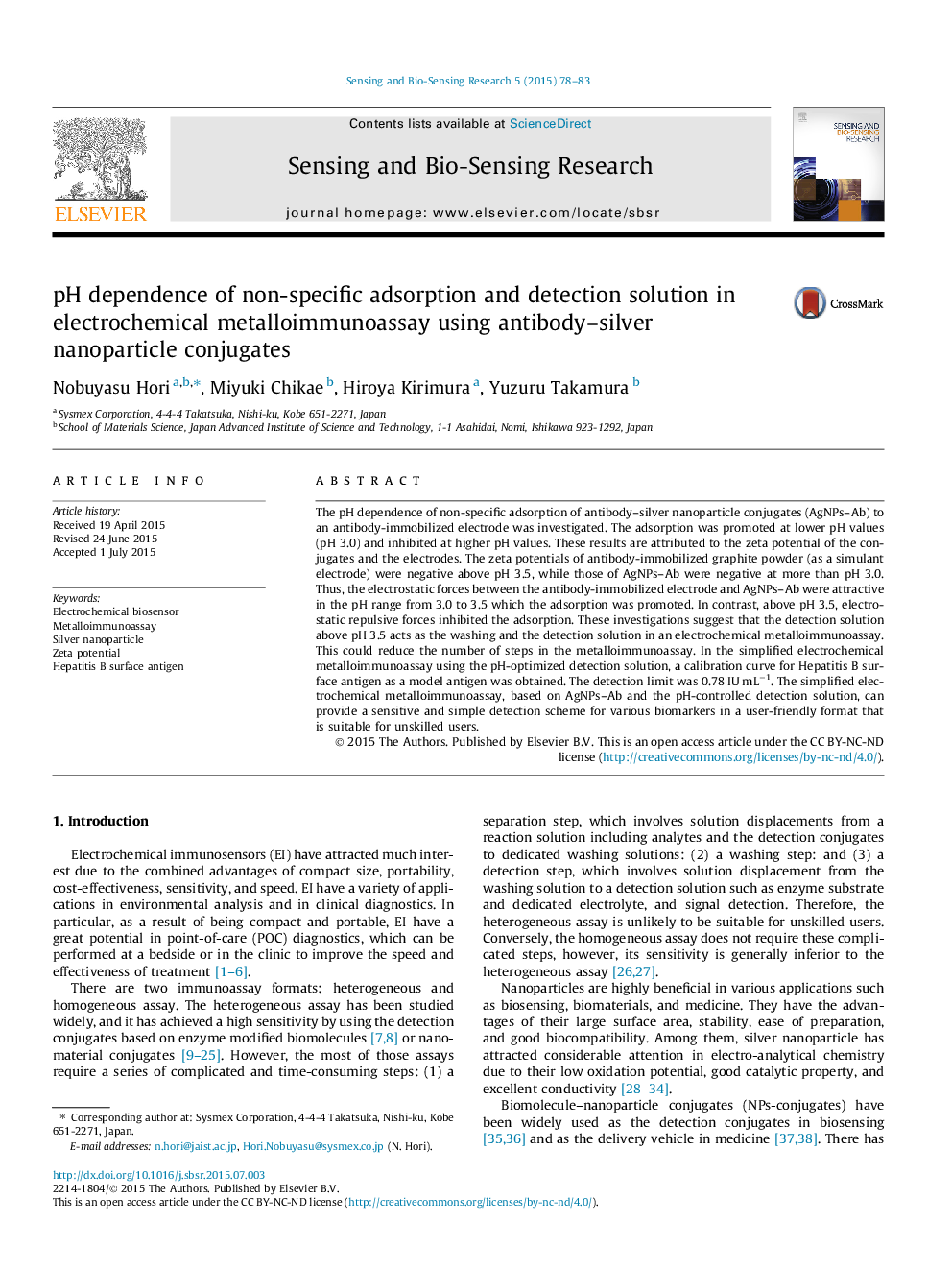| Article ID | Journal | Published Year | Pages | File Type |
|---|---|---|---|---|
| 804067 | Sensing and Bio-Sensing Research | 2015 | 6 Pages |
The pH dependence of non-specific adsorption of antibody–silver nanoparticle conjugates (AgNPs–Ab) to an antibody-immobilized electrode was investigated. The adsorption was promoted at lower pH values (pH 3.0) and inhibited at higher pH values. These results are attributed to the zeta potential of the conjugates and the electrodes. The zeta potentials of antibody-immobilized graphite powder (as a simulant electrode) were negative above pH 3.5, while those of AgNPs–Ab were negative at more than pH 3.0. Thus, the electrostatic forces between the antibody-immobilized electrode and AgNPs–Ab were attractive in the pH range from 3.0 to 3.5 which the adsorption was promoted. In contrast, above pH 3.5, electrostatic repulsive forces inhibited the adsorption. These investigations suggest that the detection solution above pH 3.5 acts as the washing and the detection solution in an electrochemical metalloimmunoassay. This could reduce the number of steps in the metalloimmunoassay. In the simplified electrochemical metalloimmunoassay using the pH-optimized detection solution, a calibration curve for Hepatitis B surface antigen as a model antigen was obtained. The detection limit was 0.78 IU mL−1. The simplified electrochemical metalloimmunoassay, based on AgNPs–Ab and the pH-controlled detection solution, can provide a sensitive and simple detection scheme for various biomarkers in a user-friendly format that is suitable for unskilled users.
